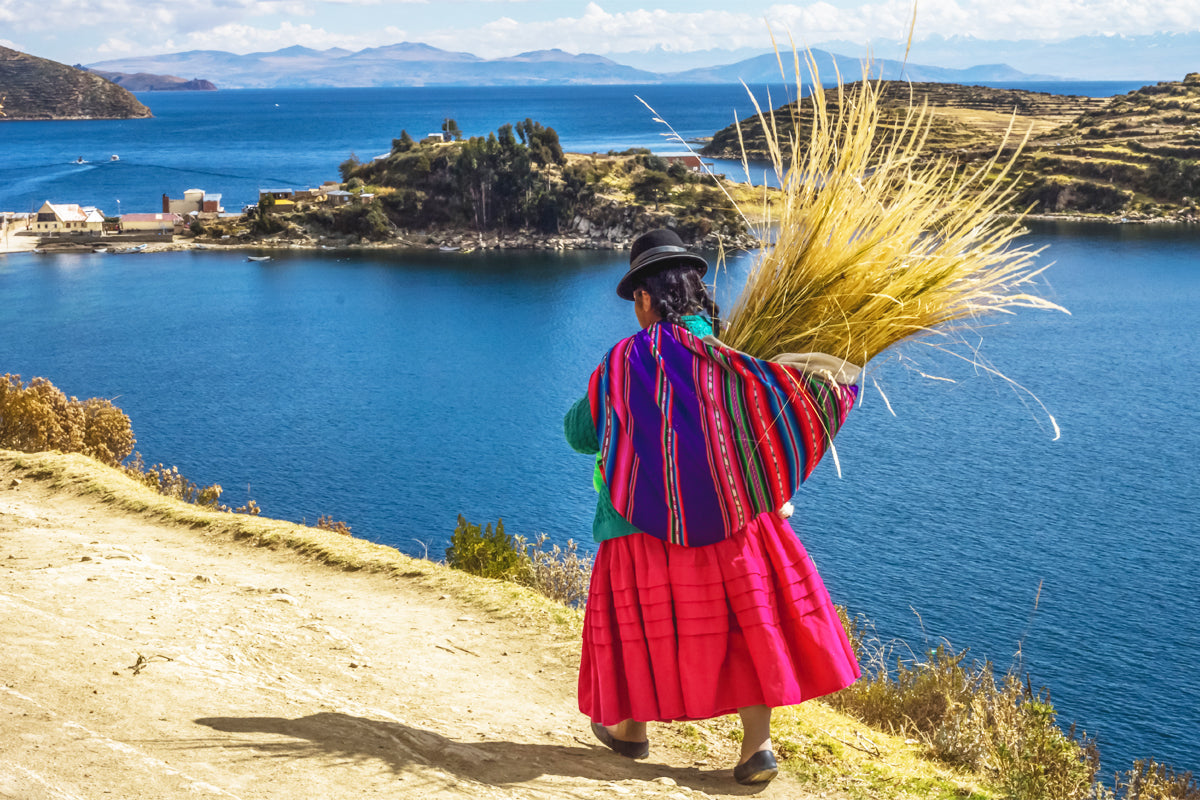Magical Tourism at Lake Titicaca: Myths and Realities of the Incas
Lake Titicaca, located in the Andes between Peru and Bolivia, is more than just a body of crystal-clear water; it is the epicenter of myths, legends, and traditions that have transcended generations. Known as the highest navigable lake in the world, Titicaca holds a special place in the Andean worldview and is considered the birthplace of the Inca Empire. Among floating islands, living cultures, and mysteries waiting to be uncovered, this destination becomes a meeting point between the real and the mystical. This blog invites readers to explore the fascinating stories, myths, and rich heritage surrounding this sacred place.
The Mythical Origin of the Inca Empire
According to legend, the first Incas, Manco Cápac and Mama Ocllo, emerged from the waters of Lake Titicaca, sent by the sun god, Inti, to found the city of Cusco and establish Inca civilization. This mythical story strengthens the spiritual bond between the lake and the cultural identity of Andean peoples. Through this myth, Titicaca becomes a symbol of creation and order, representing the beginning of an organized society based on religious and moral precepts. Even today, travelers experience the spiritual power of the lake when visiting the islands that recreate these stories in traditional ceremonies.
The Floating Islands of the Uros: Ancestral Ingenuity
The Uros, a pre-Inca community, build their floating islands using totora, a water plant abundant in the lake. These islands are not only a demonstration of adaptation and ingenuity but also keep ancestral customs alive that have withstood the test of time. Visitors can experience the daily life of the Uros, who open their homes to show how the islands are constructed and share their traditions. This coexistence reinforces the commitment of these communities to cultural preservation, while tourism allows them to continue their way of life.
The Island of the Sun and the Island of the Moon: Andean Spiritual Centers
The Island of the Sun and the Island of the Moon, located in the Bolivian part of the lake, are considered sacred sites. It is believed that solar and lunar gods were born here, consolidating the relationship between natural forces and Andean spirituality. The Island of the Sun contains important archaeological ruins, such as the Temple of the Sun, attracting both pilgrims and tourists alike. Both islands preserve a mystical atmosphere that allows visitors to reconnect with the Inca past and the energy of the Apus (spirits of the mountains).
Rituals and Celebrations in Honor of the Lake
Lake Titicaca is the protagonist of various traditional celebrations, such as the Feast of the Virgin of Candelaria in Puno, which combines Christian elements with Andean rituals. During these festivities, homage is paid to nature and water as sources of life, reinforcing the connection between the sacred and the everyday. The rituals include offerings to Pachamama (Mother Earth) and the lake to thank for prosperity and seek protection. These ceremonies showcase how indigenous spirituality remains alive in contemporary culture.
Community Tourism: A Bridge Between Past and Present
Community tourism at Lake Titicaca allows travelers to live with local families, learning about their culture and traditions. Communities like Amantaní and Taquile offer unique experiences, such as participating in agricultural tasks and preparing traditional meals. This type of tourism not only fosters cultural preservation but also promotes sustainable economic development. By interacting with the lake's inhabitants, visitors become active participants in the conservation of their heritage.
Biodiversity of Lake Titicaca: A Fragile Ecosystem
The lake is home to unique biodiversity, with species such as the giant Titicaca frog and the killifish, which are not found anywhere else in the world. However, this ecosystem faces challenges such as pollution and climate change, which threaten its natural balance. Local communities and environmental organizations work together to protect this natural wealth through conservation campaigns and educational programs. The biodiversity of Titicaca is a treasure that reflects the interdependence between nature and culture.
The Future of the Lake: Challenges and Opportunities
The sustainability of tourism at Lake Titicaca depends on balanced management that considers both the preservation of the natural environment and the well-being of local communities. Urban expansion, pollution, and the pressure of mass tourism pose significant challenges. However, initiatives for responsible tourism and conservation projects offer hope for the lake's future. Collaboration between communities, governments, and international organizations will be key to ensuring that future generations continue to enjoy this magical place.
Lake Titicaca is more than a tourist attraction: it is a melting pot of history, mythology, and nature that reflects the grandeur of the Inca civilization and the resilience of present-day Andean communities. From its foundational myths to its unique biodiversity, the lake offers a space where the sacred and the everyday converge. The tourist experiences at Titicaca, from the floating islands to ceremonial centers, invite visitors to immerse themselves in a millennia-old legacy. The preservation of this heritage will depend on sustainable practices that allow its magic to be conserved for future generations.
Sources Consulted
- D’Altroy, T. N. (2014). The Incas. New York: Wiley-Blackwell.
- Hyslop, J. (1984). The Inka Road System. Washington D.C.: Smithsonian Institution Press.
- Murra, J. V. (2002). The Economic Organization of the Inca State. Tucson: University of Arizona Press.
- Rostworowski, M. (1999). History of Tahuantinsuyo. Lima: Institute of Peruvian Studies.
- UNESCO (2014). Qhapaq Ñan, Andean Road System. Retrieved from www.unesco.org.
Article originally published on [9/8/2024], updated on [10/23/2024]


